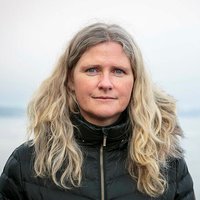The goal of the group is to generate knowledge of distribution and trophic interactions, develop ecological methods and obtain knowledge of non-commercial species and indicators for marine ecosystem-based management.
The group carries out theoretical, experimental and field-based studies, focusing on interactions between the species that make up marine ecosystems.
The group’s main areas of activity are as follows:
- distribution and migration, with particular focus on predator-prey relationships
- prey selection and the functional response of predators
- studies of diet
- trophic structure, food chains and energy flow in marine ecosystems
- testing of biological relationships in population dynamics models
- consumption, growth and natural mortality at population level and variations in these parameters as a consequence of changes in the abiotic and biotic environment
- management plan for the Barents Sea and Norwegian Sea
- summer ecosystem cruise in the Barents Sea
- Who eats who in an ecosystem?
This is an important question if we wish to follow the transport of energy through the food net in an ecosystem. The uptake of nutrition by organisms is one of the processes that ensures that this form of energy transport takes place, and the process is called “trophic interactions”. Analyses of stomach content is one of the methods that provides important information about the roles played by individual members of an ecosystem. The flow of energy in marine ecosystems usually goes from phytoplankton via zooplankton to fish and marine mammals, but in certain cases it can take remarkable routes. The photo below shows a large jellyfish from the coast of Sierra Leone that has eaten small fish. Changes in an ecosystem may lead to changes in the flow of energy. Jellyfish “blooms” have been observed at various locations all over the world, and may result in reduced fish density, an ecosystem changes that is of little advantage to human beings.


